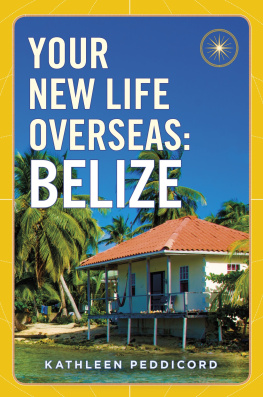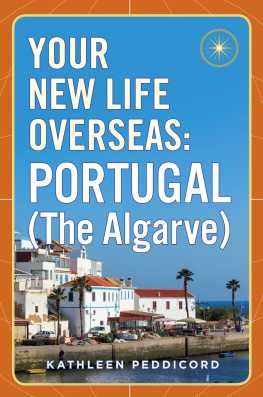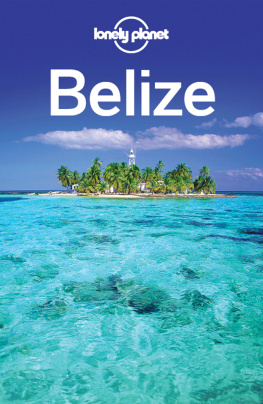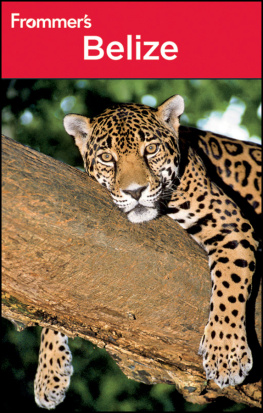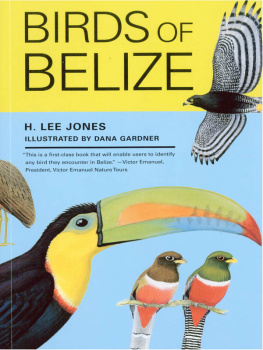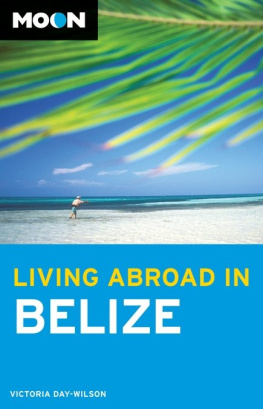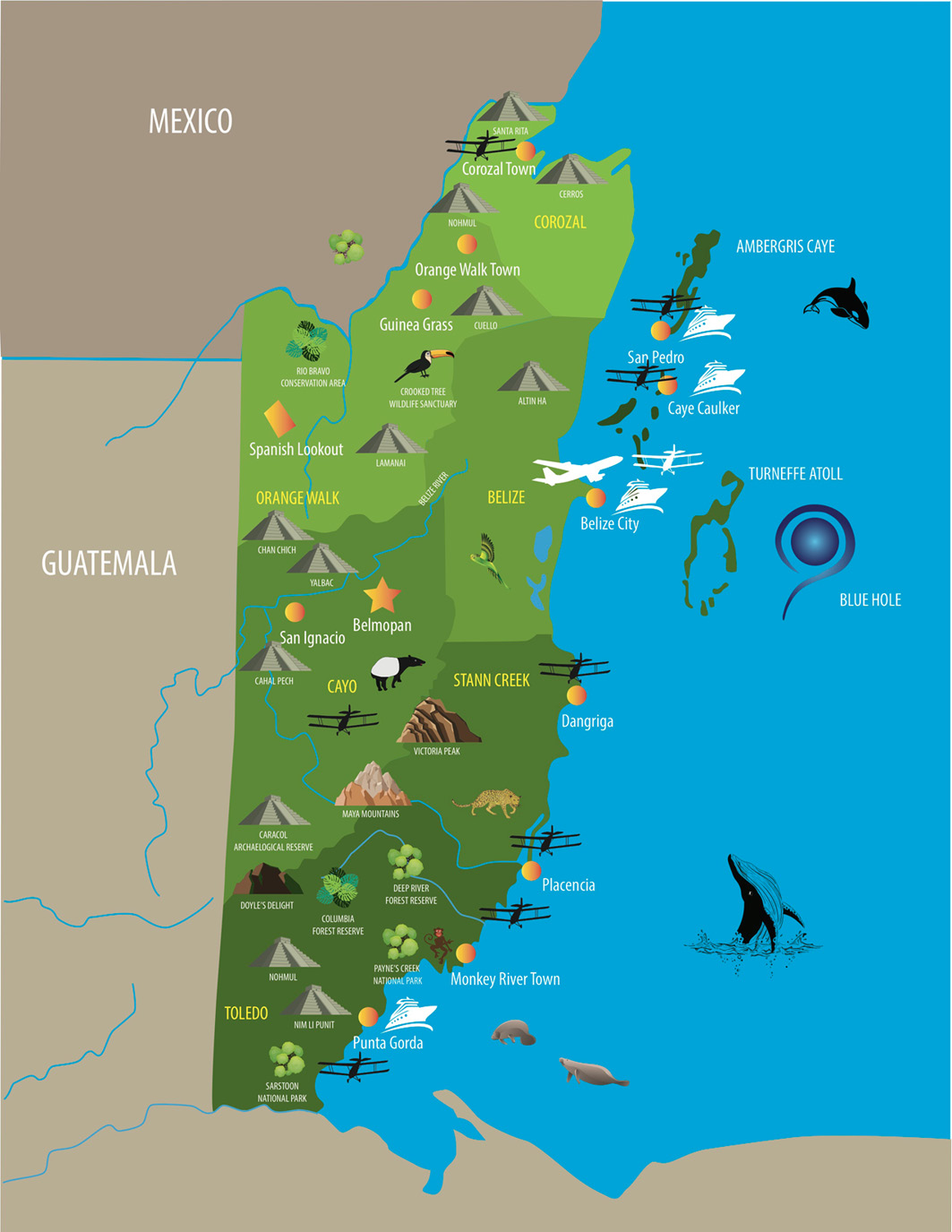Your New Life Overseas
Belize
Kathleen Peddicord

PLUME
An imprint of Penguin Random House LLC
375 Hudson Street
New York, New York 10014
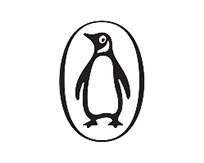
Copyright 2017 by Kathleen Peddicord
Penguin supports copyright. Copyright fuels creativity, encourages diverse voices, promotes free speech, and creates a vibrant culture. Thank you for buying an authorized edition of this book and for complying with copyright laws by not reproducing, scanning, or distributing any part of it in any form without permission. You are supporting writers and allowing Penguin to continue to publish books for every reader.
 REGISTERED TRADEMARKMARCA REGISTRADA
REGISTERED TRADEMARKMARCA REGISTRADA
Library of Congress Cataloging-in-Publication Data
has been applied for.
ISBN 9780525533801
Map design by Helena Kletochkina
While the author has made every effort to provide accurate telephone numbers, Internet addresses, and other contact information at the time of publication, neither the publisher nor the author assumes any responsibility for errors or for changes that occur after publication. Further, the publisher does not have any control over and does not assume any responsibility for author or third-party websites or their content.
Version_1
C ONTENTS
I NTRODUCTION
BELIZE IS THE QUIRKIEST COUNTRY YOULL EVER KNOW
Since Survivor and Temptation Island put it on Americas radar, sleepy little Belize has been attracting attention for its white-sand beaches, coral reef, Mayan ruins, and virgin rain forest.
Historically, it was the countrys land, water, gold, timber, and oil. These are the agendas that have been bringing people to Belize since the Maya settled in the region more than four thousand years ago. At one time, the forests, coastlines, and rivers of this country supported an agrarian Maya population of nearly 500,000, about 150,000 more people than live in Belize today.
Life in Belize, in the time of the Maya and today, revolves around its rivers, once its highways of commerce and still an important part of this countrys economy. Belize has only three paved highways but thirty-five riverine systems. The Belize River catchment and watershed, including the Macal and Mopan River tributaries, is home to half the countrys population.
The natural life in Belize today is similar to the natural life of this country in Mayan times. Explore caves and Mayan temples, and you find hieroglyphs depicting the same iconic flora and fauna you see in modern-day Belize. Towering ceiba trees (the Maya Tree of Life), colorful toucans, and wild jaguars continue to thrive in this still very undeveloped country.
One of the Mayan creation stories features an iguana with the earth riding on its back. The iguana has existed in the tropical forests of Central America since the Cretaceous Period. The Yucatec Maya called the iguana huh, and today the locals call them bamboo chickens.
Huh, bamboo chicken?
People sometimes wonder what happened to the Maya. Theyre alive and well in Belize. The Yucatec, Mopan, and Kiche Maya were the countrys first civilizations, and their descendants live along this countrys coastline and in its interior jungles still today. They represent about 11 percent of the population and are active in all segments of society. The Mayan people, their culture, and their history are a big part of what defines modern Belize.
In addition to the Maya, youve got the Kriol people. The Kriol of Belize are descended from the British and Africans who settled much of the countrys coastline in the seventeenth, eighteenth, and nineteenth centuries. They, like the Maya, continue to influence local politics, the economy, and social life. English is the official language of Belize, but Kriol is the lingua franca.
Belize is a melting pot, a bouillabaisseor, as the Belizeans might say, a boil-up. Boil-up is a Belizean Kriol gumbo made with yams, cassava, tomatoes, onions, sweet potatoes, fish, pigs tail, water, salt, pepper, dough, eggs, plantains, and bananas. An exotic mix of familiar ingredients... and thats very Belize.
Timber!
Prior to the arrival of English, Scottish, and Welsh loggers, the Spanish searched for gold and attempted to colonize the region. They found no gold, but, in their searching, they noticed something elsean abundance of timber. The timber trade has played an important role in Belizes development and led to one of the most notable events in the countrys history, the Battle of St. Georges Caye, on September 310, 1798, between a Spanish flotilla and a ragtag group of Brits and Baymen (local privateers).
The Battle of St. Georges Caye marked the last time the Spanish attempted to dislodge the British settlers and was followed by nearly three centuries of British colonization and logging. The timberworks provided Great Britain with logwood for dyeing fabrics, and, when that market dried up, they turned to harvesting mahogany for furniture and shipbuilding. Belize mahogany was used to make dining tables and chairs for Buckingham Palace.
For the British, Belize was a logging outpost. They saw no need, therefore, to invest in infrastructure in the country... and didnt. Infrastructure development has become a priority only in recent years. The power and communication grids are growing, and a new state-of-the-art sanitation facility is up and running.
While transitioning from crown colony to sovereign nation has been a challenge, Belize didnt have to fight a revolutionary war to gain independence. In fact, the country has no standing army and has never been involved in an armed conflict other than the Battle of St. Georges Caye, during which, its reported, nary a shot was fired.
Belize progressed peacefully from colony status in 1862 to self-governance in 1964 and then to full independence in 1981. All along the way, it has continued to develop eclectically. After colonization came the mestizos from the Caste War in the Yucatn, the Garifuna from St. Vincent, American Civil War refugees, East Indian indentured servants, Middle Easterners escaping conflict, Mennonites seeking religious tolerance, Chinese pursuing self-determination, Central Americans fleeing strife, and, most recently, baby boomers looking to change latitudes and attitudes.
Regardless of where theyve come from, the people who find their way to Belize live in the present, remain optimistic about the future, and bask in the sunshine and spirit of one of the worlds quirkiest nations.
Belize is a country of freedom seekers. The pirates came to ply their trade out of view. The Mennonites came from Germany and the Netherlands so they could be Mennonites without anyone bothering them. The British came so they could bank in private. And the folks from the surrounding countries whove sought out Belize over the past few decades typically have made their way across this countrys borders in search of safety.
Freedom Seekers Welcome
Today, Belize is welcoming a new population of freedom seekersNorth American retirees and expats.

